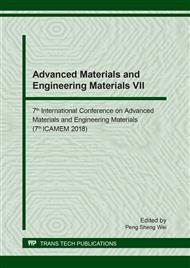p.277
p.282
p.289
p.294
p.300
p.306
p.311
p.316
p.322
Effects of Processing Parameters on Microstructure and Properties of Aluminum-Silicon Alloy ADC12
Abstract:
Aluminum-Silicon Alloy, ADC12 is one of the most popular alloys for pressure die casting due to its high castability and high productivity. ADC12 is a hypoeutectic aluminum-silicon alloy that contains 10-12wt% of Si and has an occasional problem for a mechanical properties failure such as crack and shrinkage porosity. This study presents the investigation of the microstructure of ADC12 parts produced by pressured die casting with different process parameters and chemical compositions. The microstructure was observed using optical microscopy (OM) and scanning electron microscopy (SEM) with energy – dispersive X-ray (EDX) and electron backscatter diffraction (EBSD) to determine phases, grain, and crystallographic information in order to understand the microstructural evolution after die casting with different process conditions. Changes in casting pressure and a reduction of iron content contributed to enhanced mechanical properties and less shrinkage porosity. This was due to different processing parameters, mainly casting pressure. The average grain size of aluminum matrix was also reduced due to a higher pressure during casting with a moderately fast cooling rate.
Info:
Periodical:
Pages:
300-305
Citation:
Online since:
August 2018
Authors:
Keywords:
Price:
Сopyright:
© 2018 Trans Tech Publications Ltd. All Rights Reserved
Share:
Citation:


